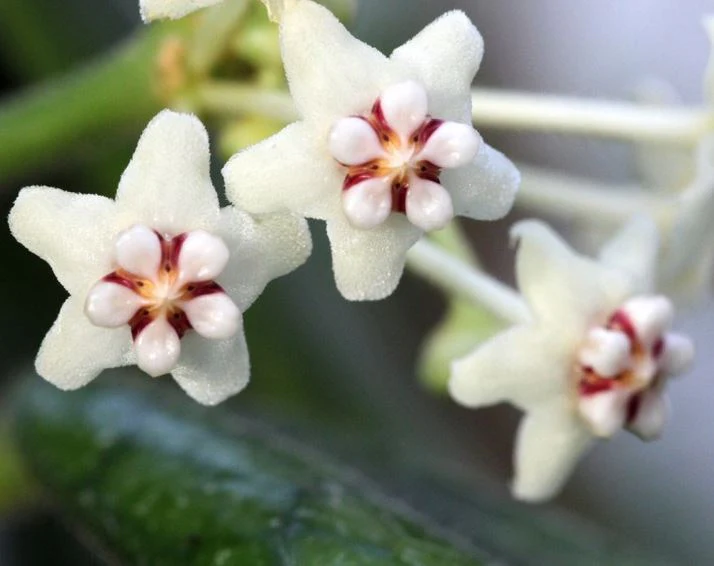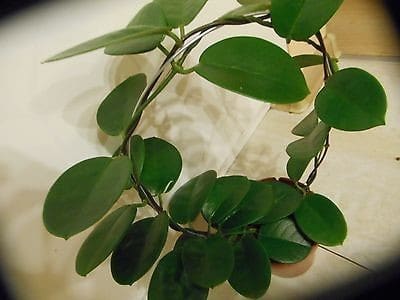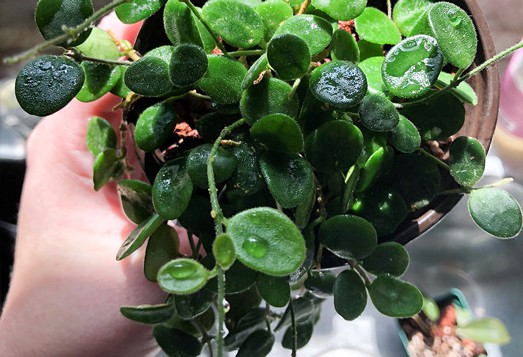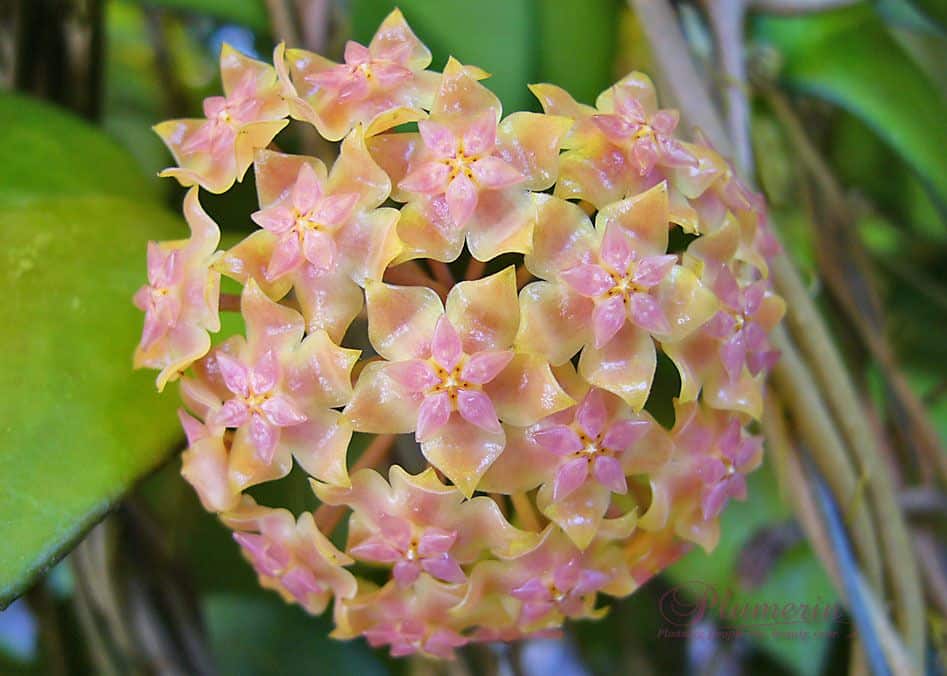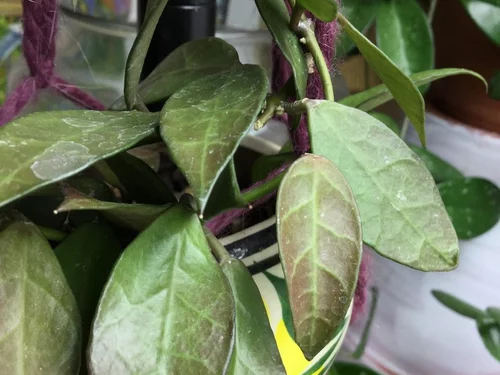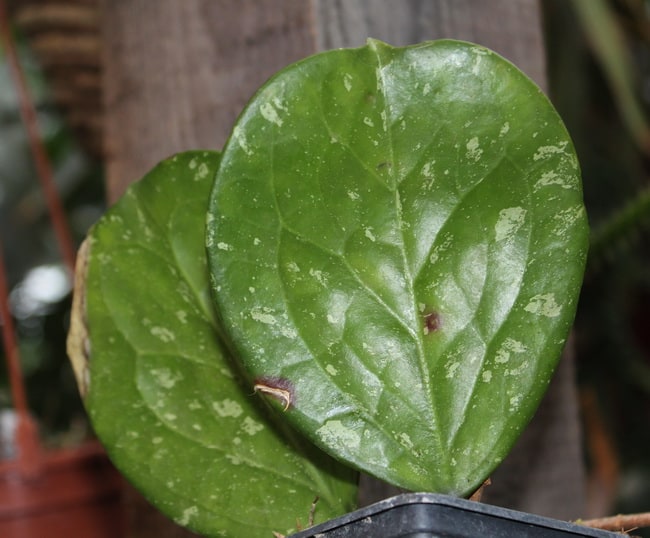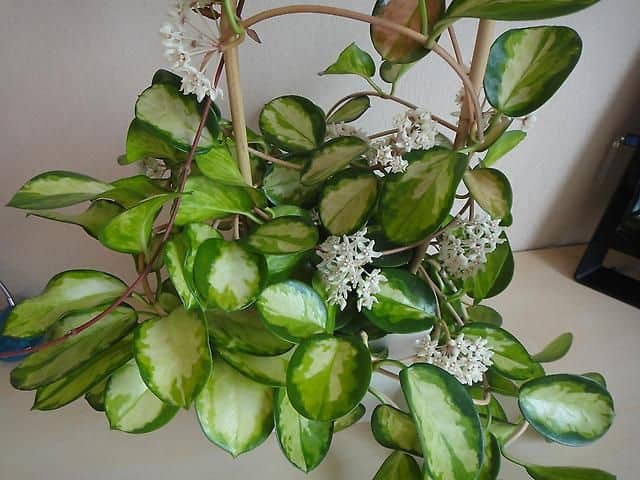Hoya villosa is also known as the wax-leaf hoya or the waxy hoya, and is a popular decorative houseplant that can grow in low light conditions.
The Hoya villosa has become wildly popular as an indoor houseplant in recent years. Due to its unique growing habits and its low maintenance requirements, it’s no wonder that the
Hoya villosa has received so much attention from aspiring green-thumbed gardeners who want to create something beautiful inside their home but don’t have time to spend hours upon hours maintaining it.
You’ve just bought your first hoya plant, either because you have an interest in the plant or because someone gave it to you as a gift. Hoya plants are very easy to care for, but they do have certain needs that must be met to keep them healthy and happy.
Here’s what you need to know about caring for your hoya villosa plants, including how to propagate the new hoya plants and how to make the plant thrive at home!
Origin and descriptions
The Hoya villosa plant is part of a genus that includes around 125 species, many native to tropical Asia. Also known as wax plants, these are popular household houseplants; hoyas need bright light but don’t mind lower temperatures or less humidity than other indoor plants.
Hoyas have fleshy leaves that look like succulent leaves, which are actually specialized to capture water from morning dew and store it for long periods of time.
It grows in a variety of colors, including reds, pinks, and purples. This particular variety can be grown outdoors in U.S. Department of Agriculture zones 10b through 11 (check with your local extension service for exact information).
They can also be grown indoors year-round in most areas of North America if given enough light, an east-facing window will work well.
Hoya villosa propagation
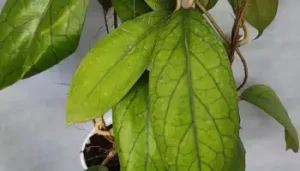
Hoya villosa is propagated by seed, cuttings, or grafting. The seed may be sown in either potting mix or directly into final containers. Surface sow in a very fine moistened soil mix and cover with a layer of coarse grit. Keep warm (around 70 degrees F) in indirect light until germination occurs, which takes around 2 weeks.
Seedlings are then potted individually into 3-4 inch pots, being careful not to damage roots when repotting. Grow them on for at least one season before transplanting outdoors after all danger of frost has passed. Do not allow plants to become root-bound during their first year indoors.
They can also be grafted onto existing hoya stock at any time during their first growing season if desired. Plants should be kept well-ventilated and never allowed to dry out completely. Water moderately from spring through fall and keep somewhat drier in winter months but do not allow plants to wilt.
Feed monthly with a balanced liquid fertilizer diluted by half. This species tends to flower best when grown slightly drier than most other hoyas so use caution when watering as too much moisture will often cause problems with fungal infections such as mold or leaf spots.
Hoya villosa care information
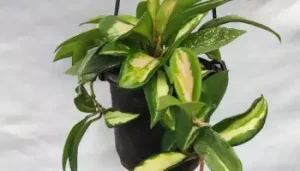
Hoya plants are a very popular indoor plant in part because they are relatively low maintenance. They need a medium to high indirect light, can handle irregular watering schedules, and thrive in almost any temperature as long as it is not freezing cold or scorching hot.
Humidity is essential for these tropical plants so place your plant on a humidity tray, keep it near a window or run a humidifier nearby.
In winter months when days are shorter try giving them an hour of direct sunlight daily if possible to encourage blooming. If you notice brown tips on leaves, it could be due to too much sun exposure but most likely it’s just due to old age.
Fertilize once every two weeks with a balanced fertilizer diluted at half strength (use 1/4 teaspoon per gallon of water). Keep dead leaves trimmed off at all times.
Light requirements
If grown indoors, your hoya should be in a moderately bright area. If direct sunlight is unavoidable, choose a plant that can handle it, such as one with variegated leaves like Rainbow or Wineberry hoyas.
Hoya villosa will tolerate low-light conditions fairly well if they have to—but be sure to rotate its position regularly so it doesn’t grow leggy without good light. Place your hoya near a window that gets indirect sun for best results.
You may also want to consider using artificial lighting for particularly short days during the winter months, especially if you live in northern latitudes where days are short and nights are long.
The lights should be placed about 2 feet above the plant (or 1 foot above plants under 6 inches tall) and kept on for 12 hours per day at a minimum.
Soil/potting mix
The soil for hoyas should be slightly acidic, so using a mix that is either peat moss-based or contains sphagnum peat moss is good. If you’re not sure about your pH level, buy an inexpensive pH meter.
Hoya villosa need to be in soil that drains well. A mix of 1 part peat moss, 1 part perlite or vermiculite, and 1 part coarse sand (like builder’s sand) is recommended. This ensures that water drains through quickly but there is still enough moisture to prevent dryness. You can also use straight perlite or vermiculite if you prefer those to peat moss.
Watering
Hoya plants are known for being fairly drought-tolerant. As a succulent, it will store water in its leaves. If you overwater it, it may rot. You can tell if your Hoya is getting too much water by inspecting its leaves closely; look for signs of browning or spots at their edges or along their veins, which are signs that water is pooling in those areas.
At these times, cut back on watering your Hoya plant to prevent rotting. Be sure to only use distilled or purified water when watering, if you use tap water, there’s a chance that chemicals like chlorine will build up in your soil over time and harm your plant. Water when the soil feels dry 1/2 inch below the surface.
Fertilizer
Use a fertilizer high in nitrogen when repotting. Try using two parts bark to one part bone meal or five parts manure to one part bone meal as a fertilizer at half strength in each repotting.
With more mature plants, you can feed with standard houseplant food (such as Miracle-Gro) at full strength every time you repot. Be sure not to overfeed; water-soluble fertilizers are especially easy to overdose on.
Temperature
Hoya villosa prefers temperatures above 55 degrees Fahrenheit. If you grow it in an area that dips below 55 degrees, then place it under light to warm up.
Alternatively, if you are using heat lamps or other forms of artificial heating, make sure that they are not too close to your plant as they can dry out your leaves. Otherwise, they will end up looking burnt and won’t last long!
Humidity
Hoya villosa plants do best in an environment with low humidity. However, too-low humidity can cause problems as well: If you’re growing Hoya indoors, you’ll want to keep your plant on a tray of moistened stones or gravel and spray it lightly with water every few days.
The ideal humidity range is 40-60% relative humidity. To get an idea of what your home’s humidity level is, you can use a hygrometer or an electronic humidifier.
If you don’t have either of these, a good rule of thumb is to keep your plant away from heat sources (like fireplaces) and direct sunlight, which can increase its need for water.
You may also want to place it on a pebble tray filled with small stones that have been soaked in water for several hours; these will help humidify your home without adding moisture directly to your potting soil.
Pruning
When trimming your Hoyas, it’s best to remove 1/3 of all leaves at a time. It can take 6-8 weeks for your plant to recover from pruning, so be sure you know what you’re doing before you commit!
When you’re finished, use a fertilizer that is high in phosphorous. If your Hoyas aren’t blooming, give them more light – but remember not to expose them to direct sunlight as it can burn their leaves.
When to repot
Repot Hoya villosa every spring when new growth appears. Repot in a smaller pot only when your plant has outgrown its current container, or if its roots have filled more than two-thirds of it.
When repotting, always use fresh potting soil—never add old soil to new. Keep an eye on drainage holes: If they start to clog with dirt or debris, clean them out gently with a toothpick so water can drain freely from your plant’s roots.
Dormancy
Many houseplants are tropical plants that require warm, humid climates to grow well. During their growing season, they’ll produce new leaves, stems, flowers, and fruit at a regular pace.
In order to keep your plant healthy during its dormant period (wintertime), you need to figure out how long it will last without food or water. If you don’t provide adequate care during dormancy, your plant might not make it through.
Hoya villosa flower & fragrance
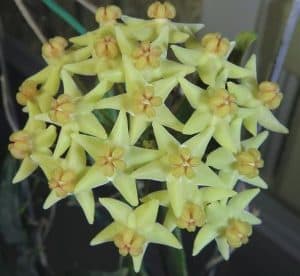
Often referred to as Wax Flowers, these plants are grown primarily for their showy blossoms. Their flowers can last up to a year or more when well cared for.
Because these blooms are produced on small, relatively short-lived plants, cutting back on watering is usually necessary. Hoya villosa’s waxy leaves make it one of the most attractive flowering houseplants available today.
Growth rate
Hoya villosa is a slow-growing plant that works well for novice terrarium enthusiasts. Not only does it have beautiful, delicate flowers that will look stunning in your custom terrarium, but it also requires little care from you, especially if you forget to water it.
Toxicity
Hoya villosa plant is toxic to pets and humans so keep it away from children, pets, and mouthy friends. Chewing or eating any part of a hoya can cause stomach pains or vomiting; if these symptoms persist, seek medical help. The sap may also cause skin irritation in some people, so use gloves when handling it.
You can wash your hands with soap and water if you get it on your hands but do not rub them together after washing because that may exacerbate skin irritation.
USDA Hardiness Zones
Hoya villosa can be grown outdoors in USDA Hardiness Zones 9-10. You should bring it indoors during freezing temperatures. It grows well under fluorescent lights or outdoors with direct sunlight. Plants need well-drained soil, as they don’t like wet feet.
Pests and diseases
While Hoyas are generally pretty resilient to diseases, they can be affected by pests such as aphids, spider mites, and scale.
These pests can often be controlled by good housekeeping practices: keep Hoya villosa healthy, prune them regularly to promote good air circulation, and wipe down leaves with a damp cloth or shower spray on a weekly basis.
If these simple tactics fail, try neem oil for an organic solution that won’t harm your plants. You may also want to consider investing in ladybugs—they eat lots of aphids! Just make sure you buy live ones (rather than eggs) and release them at night so they don’t fly away before their work is done.
Hoya villosa is known to be susceptible to red spider mite infestations if overwatered.
Conclusion
Hoya villosa is an evergreen tropical vine that requires little care. It’s also quite happy living on a windowsill or hanging from a ceiling, making it ideal for those with limited space.
If you have access to low light and humidity, you can grow Hoya villosa as a houseplant. Indoors, plants thrive at temperatures between 65 degrees F and 80 degrees F, making them suitable for even colder regions where winter temperatures stay above freezing.
